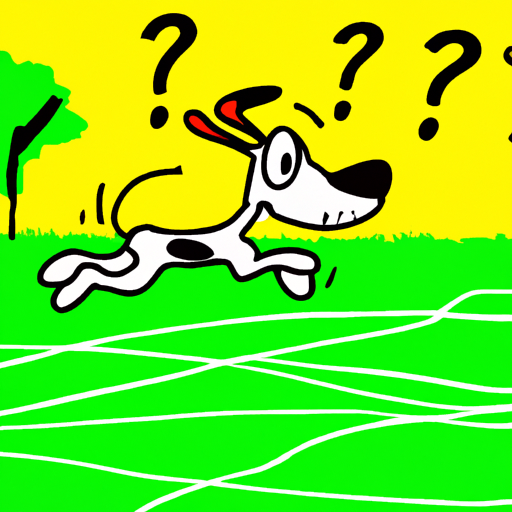Understanding the Zoomies
You’ve seen it, right? Out of nowhere, your dog suddenly starts racing around the house or yard in a frenzied, high-energy burst of activity. This is called the “zoomies,” or in technical terms, Frenetic Random Activity Periods (FRAPs).
These periods of hyperactivity are completely normal and a common part of a dog’s behavior. They’re usually a sign that your dog has lots of energy to burn, and they’re often seen in puppies and younger dogs. But what exactly triggers the zoomies, and are they something to be concerned about? Let’s find out.
What Triggers the Zoomies?
There isn’t a single reason why dogs get the zoomies. Instead, it can be a combination of things. Here are a few common triggers:
- Excess Energy: Dogs, especially young ones, have a lot of energy. If they don’t get enough physical and mental stimulation during the day, they may get the zoomies to burn off that pent-up energy.
- Excitement: Sometimes, a sudden spike of excitement can trigger the zoomies. This could be after a bath, a meal, or when you come home after being away.
- Play Behavior: Zoomies can also be a part of normal play behavior. Your dog might get the zoomies during a particularly fun play session.
Are Zoomies Good or Bad?
The answer is: it depends. On one hand, zoomies are a normal part of a dog’s behavior and can be a fun and entertaining display of their happiness and energy. Here are a few benefits of zoomies:
- They provide a natural outlet for your dog’s energy.
- They can be a sign that your dog is happy and excited.
- They can be a form of self-entertainment for your dog.
However, zoomies can also potentially be dangerous if they occur in an unsafe environment. For example, a dog zooming around a small apartment could knock over furniture or hurt themselves. Therefore, it’s important that you provide a safe space for your dog to have their zoomies.
Managing the Zoomies
As a caregiver, you may be wondering how to manage your dog’s zoomies. Here are a few tips:
- Ensure a Safe Environment: Make sure the area where your dog is zooming is safe and clear of anything they could knock over or hurt themselves on.
- Don’t Chase Your Dog: Chasing your dog can make them think it’s a game and can make them zoom even more.
- Provide Regular Exercise: Regular exercise can help reduce the frequency of zoomies by burning off excess energy.
The Science Behind the Zoomies
Believe it or not, there’s actually some science behind the zoomies. When dogs have a surplus of energy, their bodies produce more adrenaline. This adrenaline then fuels the zoomies, allowing your dog to burn off their excess energy in a fast and frenzied manner.
| Trigger | Response |
|---|---|
| Excess Energy | Increase in adrenaline production, leading to zoomies |
| Excitement | Trigger for adrenaline production, leading to zoomies |
| Play Behavior | Adrenaline production as part of play, possibly leading to zoomies |
Frequently Asked Questions
Q: Are zoomies a sign of distress in dogs?
A: No, zoomies are typically a sign of happiness and energy in dogs.
Q: Can zoomies be dangerous for dogs?
A: They can be if the environment where they’re zooming is not safe.
Q: How can I prevent my dog from getting the zoomies?
A: Regular exercise and mental stimulation can help reduce the frequency of zoomies.
So the next time you see your dog running like a bolt of lightning, don’t worry. They’re just having a case of the zoomies.



